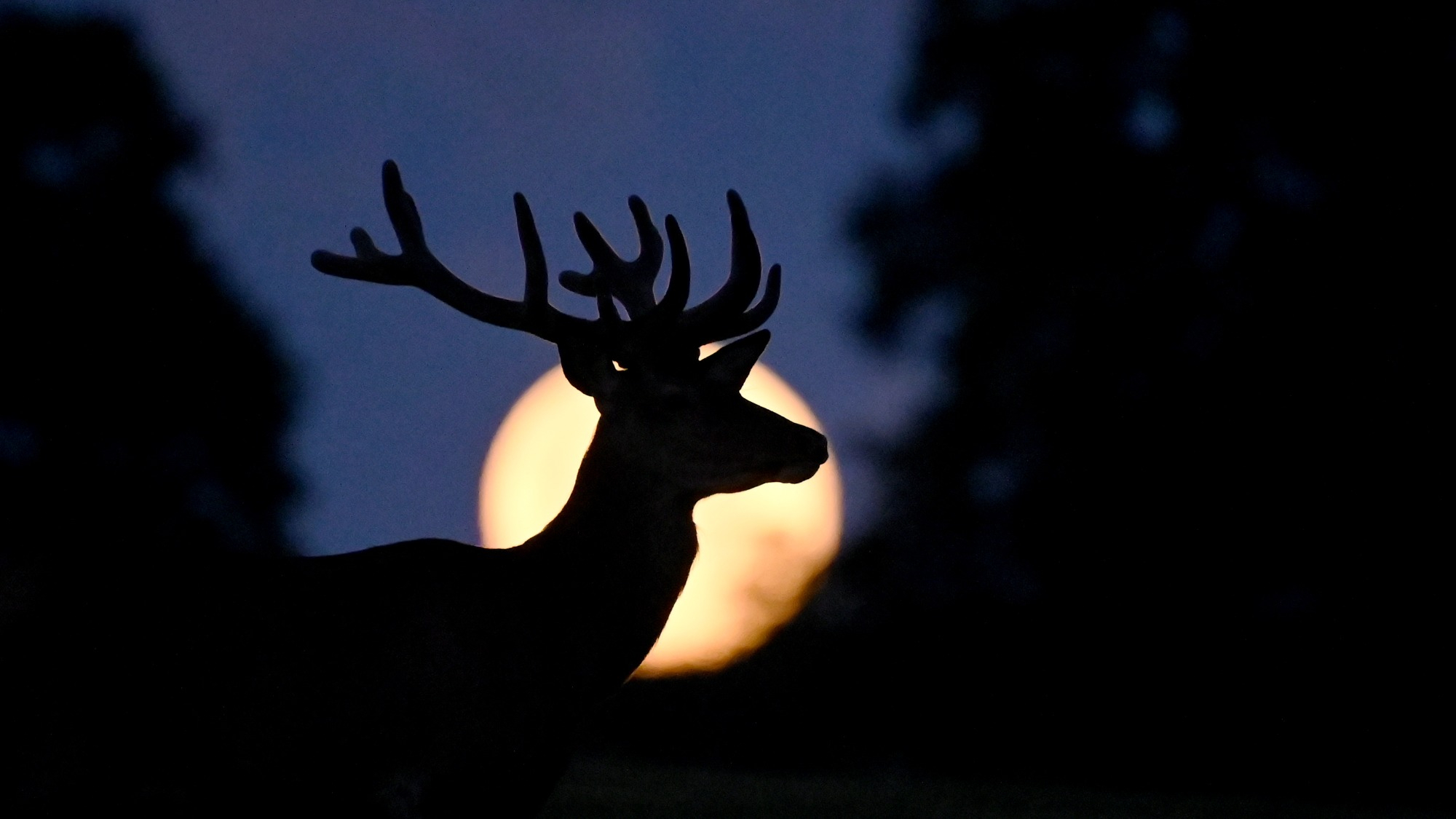

| July 1 | Conjunction of Venus and Mars |
| July 3 | Full Buck Supermoon |
| July 7 | Venus at its Brightest |
| July 16 | Lāhaina Noon Begins |
| July 29-30 | Delta Aquarids Meteor Shower Peaks |
With the summer solstice behind us, it’s true that we are losing tiny bits of sunlight per day. But that just means the short summer nights are growing a bit longer—all the better to catch exciting things happening this month. Skygazing in July should be pretty comfortable for those in the Northern Hemisphere as temperatures reach their summer highs. Here are some events to look out for and if you happen to get any stellar sky photos, tag us and include #PopSkyGazers.
July 1: Conjunction of Venus and Mars
Kicking off the first full month of summer with Venus and Mars at making a close approach to one another. The two planets will be visible just after 8 PM EDT on June 30, and will reach their closest approach at 3:09 AM EDT on July 1 as dusk fades into darkness. Both planets will lie roughly within the constellation Leo.
[Related: We finally know why Venus is absolutely radiant.]
July 3: Full Buck Supermoon
July’s full moon will rise on Monday, July 3 and reach peak illumination at 7:39 AM EDT. The moon will be below the horizon, so skygazers should look towards the southeast after the sunset to watch the Buck Moon rise.
It is also a supermoon, which means that it will appear bigger than many other full moons this year. It will be 224,895.4 miles away from Earth, and only next month’s Blue Moon will venture closer to Earth this year. According to the Old Farmer’s Almanacs, this is the first of four total supermoons for 2023.
The name Buck Moon refers to the time of year when the antlers of male deer are in full-growth mode. Additional names for July’s full moon include the Blueberry Moon or Miini-giizis in Anishinaabemowin (Ojibwe), the String Bean Moon or Ohyotsheli in Oneida, and the Thunderstorm Moon or Hiyeswa Tiriri Nuti in the Catawba Language.
[Related: ‘Skyglow’ is rapidly diminishing our nightly views of the stars.]
July 7: Venus at its brightest point of the year
The second planet from our sun is already an extremely luminescent planet, but it will be at its brightest point for all of 2023 this month. It’s hard to miss this dazzling planet, so look in the direction of sunset on any clear summer evening beginning on July 7. The lighted portion of the planet, known as the crescent Venus, will cover its greatest area on our sky’s dome.
July 16-27: Lāhaina Noon
This twice a year event occurs during the months of May and July in the Earth’s tropical region when the sun is directly overhead at around solar noon. At this point, upright objects do not cast shadows.
According to the Bishop Museum, in English, the word “lāhainā” can be translated as “cruel sun,” and is a reference to severe droughts experienced in that part of the island of Maui in Hawaii. An older term in ʻŌlelo Hawaiʻi is “kau ka lā i ka lolo,” which means “the sun rests upon the brain,” and references both the physical and cultural significance of the event.
July 29-30: Delta Aquarids meteor shower peaks
The lesser known Delta Aquarids is the first of the summer’s annual meteor showers. It starts on July 18, but is predicted to peak on July 29 and 30. However, if you miss it, don’t worry. The meteor shower doesn’t have a noticeable peak like others. It “rambles” along steadily from the end of July into the beginning of August, when it joins up with the Perseids Meteor shower—but more on that next month.
The Delta Aquarids’ can reach a maximum rate 15 to 20 meteors per hour in a dark sky with no moon. Since August’s full moon arrives early, take advantage of the moonless nights towards the end of July. Skygazing for this meteor shower is a bit better in the Southern Hemisphere, but can still be quite visible in the southern United States.
The same skygazing rules that apply to pretty much all space-watching activities are key this month: Go to a dark spot away from the lights of a city or town and let the eyes adjust to the darkness for about a half an hour.
